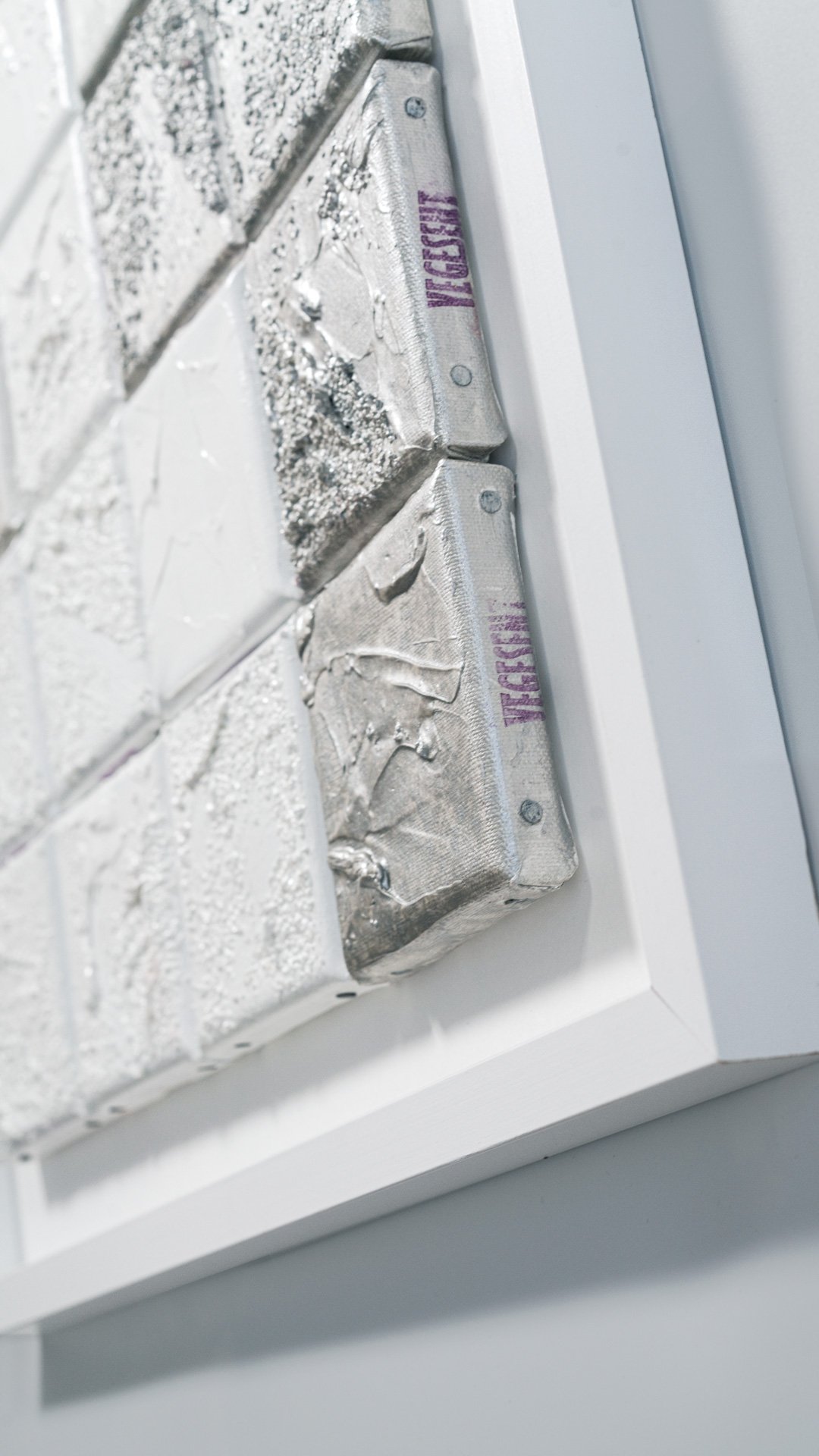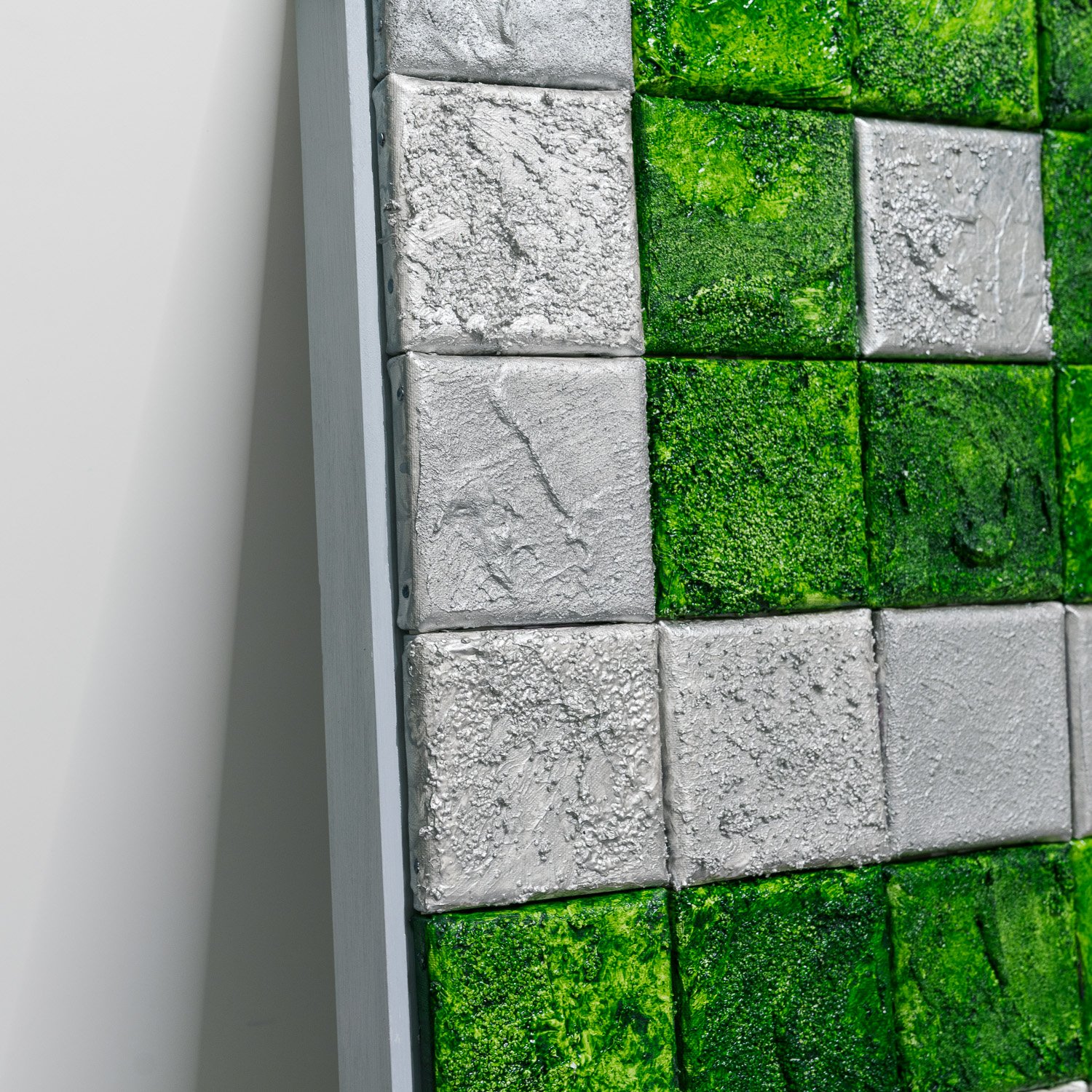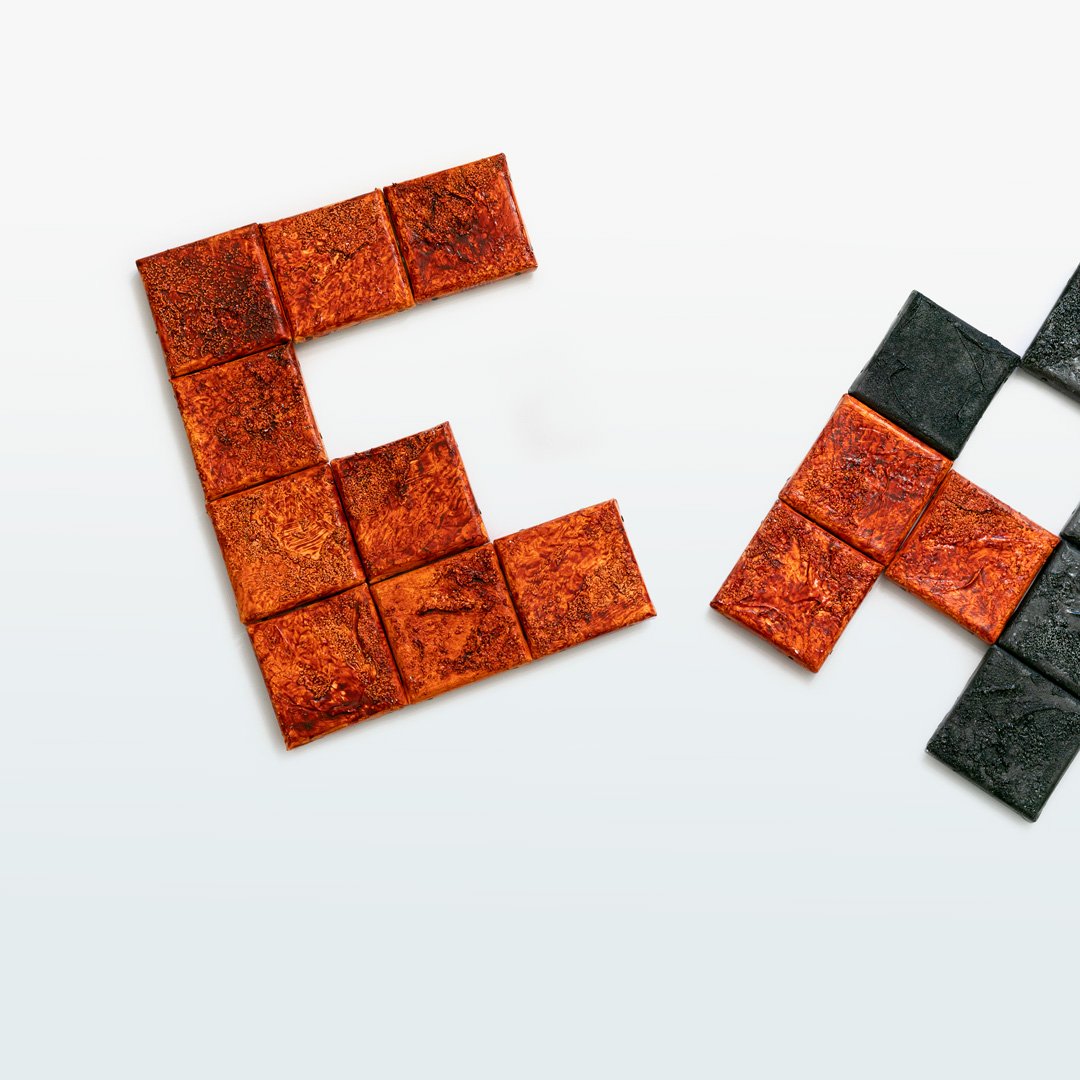Veronika Vegesent
Veronika speaks to human consciousness and individualism, translating the profound connection between humans and nature. Her work promotes mindfulness and compassion for the natural world. She is renowned for her environmental activism and her efforts to raise awareness about violence against animals within the art and design industry, gaining recognition both among the general public and professionals.
Veronika Vegesent was born in Sarapul, Russia, in 1990 and currently resides and works in Helsinki, Finland. She holds a BA in Graphic Design from Metropolia UAS, Finland (2016). Her childhood was dedicated to the study of traditional painting and visual art skills, which she has continued to develop throughout her career in various visual arts fields, including contemporary illustration, photographical art, and video game art. Her works have been published in international magazines, both online and in print, such as Picton, Boulevard, and Style Cruze.
Press release PDF
Catalog of selected works with descriptions can be downloaded Here.
Catalogs with available to acquire paintings can be found Here.
Selected artworks










Artist: Veronika Vegesent
Title: Desertification.
Unframed. 2023.
Materials: Plastic-free acrylic, sand from Helsinki, natural pigments from Lemonite mineral on linen canvas, construction made of plastic waste.
Dimensions: 40 x 50 cm 15.7 x 19.1 in
Description: Desertification is a significant environmental issue that refers to the degradation of land. It’s primarily caused by human activities. The artwork brings attention to key challenges associated with desertification:
Loss of Biodiversity: The transformation of once flourishing landscapes into harsh environments results in the loss of biodiversity. Flora and fauna that once thrived in these areas struggle to adapt, impacting ecosystems and precipitating the extinction of species.
Impact on Agricultural Productivity: Desertification significantly hampers agricultural productivity, contributing to food insecurity. Fertile lands turning into deserts render them unsuitable for cultivation and livestock grazing.
Economic Ramifications: Economic challenges arise from the loss of productive land, heightened costs of water treatment due to siltation, and increased public health expenditures stemming from dust and sandstorms. The harsh living conditions in affected areas force communities to migrate in search of better environments, leading to displacement.
This artwork is a platform to inform, inspire greater understanding and action towards mitigating the impacts of climate change. Artwork consist of 20 separate canvases addressing the collective human impact on the issue.
Artist: Veronika Vegesent
Title: Romanticisation of the cages.
Unframed. 2023.
Materials: Plastic-free acrylic, sand from Helsinki, natural pigments from Laterite soil and Red Hematite on linen canvas, construction made of plastic waste.
Dimensions: 50 x 50 cm 19.1 x 19.1 in.
Description: This artwork confronts viewers with uncomfortable truths about animal exploitation hidden in plain sight. It addresses the systemic oppression of animals exploited for human benefits. The reality of animals in captivity is a stark contrast to the romanticized portrayals often disseminated in our culture.
Worldwide, billions of animals inhabit coffin-sized cages, enduring a miserable life dictated by unnecessary human pleasures. This includes animals in farming industries, zoos, circuses, and laboratories—an ethical issue demanding attention and action.
The artwork consists of 25 separate canvases, addressing the collective human impact on this issue. The artist communicates with the viewer’s subconscious through a minimalist approach, inviting them into a dialogue. This allows viewers to explore the answer to the question within themselves: “Is it morally right to deny animals their natural right to freedom and confine them to cages?”
Artist: Veronika Vegesent
Title: Melting icebergs.
Unframed. 2023.
Materials: Plastic-free acrylic, sand from Helsinki, Silver Mica and Rutile mineral pigments on linen canvas, construction made of plastic waste.
Dimensions: 40 x 50 cm 15.7 x 19.1 in.
Description: As global temperatures rise due to human activities, like the burning of fossil fuels and animal agriculture, icebergs and other ice formations are melting at an unprecedented rate. This melting contributes to several concerning environmental impacts:
Global sea-level rise leads to coastal flooding and the displacement of human and animal populations.
Many species, particularly in the Arctic and Antarctic regions, depend on icebergs and sea ice for their survival. As ice melts, these habitats are lost, threatening the survival of these species.
Icebergs have a high albedo, meaning they reflect a significant amount of the sun’s energy back into space. As icebergs melt, the earth’s albedo decreases, causing the planet to absorb more heat and further exacerbating global warming.
Ocean Current Disruption: Around 70% of the world’s freshwater is stored in icebergs. Ice melt disrupts ocean currents by changing the temperature and salinity of the sea.
This artwork is a platform to inform, inspire greater understanding and action towards mitigating the impacts of climate change. Art- work consist of 20 separate canvases addressing the collective human impact on the issue.
Artist: Veronika Vegesent
Title: One hundred people of icy silver and earth green in a pattern of squares.
Framed. 2023.
Materials: Plastic-free acrylic, sand from Helsinki, European Glauconite and Mica mineral pigments on linen canvas, plastic waste.
Dimensions: 100 x 100 cm 39.4 x 39.4 in.
Description: The artwork presents an interplay between humanity and the environment.
The straight sidelines symbolize man-made structures, such as walls and streets, that cloak the Earth’s surface. Meanwhile, the sculptured surfaces mimic the raw textures of nature. Composed of separate canvases, it recognizes the power inherent in collective action.
The visually minimalist expression signifies mindfulness, with the artist aiming to resonate with the viewer, asking them to consider the question: 'While I am a part of the collective impact, can I personally step out of the collective destructive human pattern and be part of the new image, which calls for Earth’s nurturance and protection?'.
The goal is to inspire lives that are more responsible, thoughtful, and kind.
Artist: Veronika Vegesent
Title: One biophilic block.
Framed. 2023.
Materials: Plastic-free acrylic, sand from Helsinki, light Lemonite mineral pigment on linen canvas.
Dimensions: 12 x 12 cm 4.7 x 4.7 in.
Description: A one canvas piece out of a series.
While these miniature artworks typically form a part of larger compositions in Vegesent’s artistic practice, representing the collective human impact on a global scale, each individual canvas holds its own significance. The juxtaposition between the small, singular pieces and the larger works symbolizes the power of individual actions in shaping global issues, such as the environmental crisis and the pursuit of justice for oppressed animals.
By focusing on a single piece within the collective, the artist acknowledges and underscores the influential role every individual plays in determining the course of these pressing concerns.
Artist: Veronika Vegesent
Title: Waterlife issue.
Framed. 2023.
Materials: Plastic-free acrylic, sand from Helsinki, Azurite pigment on linen canvas, construction made of plastic waste.
Dimensions: 40 x 30 cm 15.7 x 11.8 in.
Description: The deep blue color choice promotes a sense of tranquility and introspection, inviting viewers to dive deeper into the artwork and the message it carries. Minimalistic approach serves to highlight the core issue at hand - the waterlife. It simplifies the complex narrative of environmental crisis, focusing on the essence rather than the noise.
The title directly points to the challenges faced by marine life due to human activities. Emphasizing artist’s commitment to ethical practices, the artwork is created sustainably, without the use of fossil fuels, zero waste, and is toxic-free. It stands as a testament to the possibility of creating beautiful pieces of art while respecting and preserving nature. This is not just an artwork; it’s a call to action.
It urges viewers to understand the impact of their lifestyle choices on the environ- ment and to adopt more eco-friendly and vegan practices. The vegan lifestyle promotes alternatives to fish consumption, such as plant-based seafood options. By choosing these alternatives, we can contribute to lessening the demand for overfishing and help protect marine life.
Artist: Veronika Vegesent
Title: Tikkun olam.
Unframed. 2023.
Materials: Plastic-free acrylic, sand from Helsinki, Laterite soil and Lodestone mineral pigments on linen canvas, construction made of plastic waste.
Dimensions: 110 x 135 cm 43.3 x 53.1 in.
Description: Tikkun Olam, a Hebrew phrase, translates to “repairing the world.” It’s an ancient concept that various Jewish denominations have adopted to signify social action and the pursuit of social justice. In the context of environmental activism, this concept serves as a powerful reminder of our individual and collective responsibility toward the Earth and all its inhabitants, including an mals.
Tikkun Olam provides an ethical and spiritual framework for activism, emphasizing our responsibility and potential to bring about positive change.
Artist: Veronika Vegesent
Title: Cactus leather.
Unframed. 2023.
Materials: Plastic-free acrylic, sand from Helsinki, Gold Mica and earth loam pigments on linen canvas, construction made of plastic waste.
Dimensions: 100 x 100 cm 39.4 x 39.4 in.
Description: Artwork embraces innovation and brings to focus cruelty-free alternatives to traditional leather, such as cactus leather, pineapple leather, and apple leather, as a significant step towards more sustainable and ethical practices.
The cactus, able to survive and thrive in harsh conditions, symbolizes resilience, innovation, and adaptation—qualities necessary to combat environmental challenges and move towards cruelty-free practices. Gold, associated with value and quality, further underlines the worth of such innovation.
Technical assemblage and material choice support the message of innovation to deal with environmental challenges: One hundred individual canvases are covered with plastic-free plant-based organic materials and assembled together with an innovative one-of-a- kind engineered system made from plastic waste.
Artist: Veronika Vegesent
Title: One hundred years of the Baltic sea evolution. 1923.
2023. Unframed.
Materials: Plastic-free acrylic, sand from Helsinki, Gold Mica, light Limonite, Azurite and Silver Mica pigments on linen canvas, construction made of plastic waste.
Dimensions: 60 x 80 cm, 23.6 x 31.5 inches.
Description: Diptych features the border of water and land in the region of the Baltic Sea in the years 1923 and 2023.
The beige and gold color palette signifies an era of relative environmental innocence in 1923. The beige represents the sandy coasts of the Baltic Sea, while the gold symbolizes the pristine water that once existed. Water bodies were less impacted by industrialization and pollu- tion, leading to clearer, cleaner water.
Clean seas are the cradle of marine biodiversity, hosting millions of species, from tiny plankton to enormous whales. Water also sup- ports land ecosystems. Clean water in seas is vital for everyone’s well-being, including humans. The quality of the food we grow and the water we drink depends on the global water quality. Nutrient-rich ocean waters stimulate the growth of phytoplankton, which forms the basis of the marine food chain and produces over half of the world’s oxygen.
Artist: Veronika Vegesent
Title: One hundred years of the Baltic sea evolution. 2023.
2023. Unframed.
Materials: Plastic-free acrylic, sand from Helsinki, Gold Mica, light Limonite, Azurite and Silver Mica pigments on linen canvas, construction made of plastic waste.
Dimensions: 60 x 80 cm, 23.6 x 31.5 inches.
Description: Diptych features the border of water and land in the region of the Baltic Sea in the years 1923 and 2023. The evolution shows the worsening quality of clean water, which nowadays, has become one of the most polluted seas in the world. The impact of agricultural runoff on water bodies is a widespread environmental issue.
Agricultural waste, such as manure, fertilizers, and pesticides, enters water bodies and contributes to pollution. In the Baltic Sea, this has led to eutrophication, a process where excess nutrients cause algal blooms that deplete oxygen in the water, harming marine life.
This issue is especially acute due to the intensive animal farming practices commonly used in the countries around the Baltic Sea. Waste from these farms, including uneaten food, feces, and chemicals used to treat diseases, often ends up in the sea, contributing to its pollution. The artwork consists of individual canvases, which points on the collective human impact on the issue and reveals the damaging effects we have on the environment and animal lives. The artist encourages viewers to consider the question "How do my consumption patterns affect the environment and animals?".




























